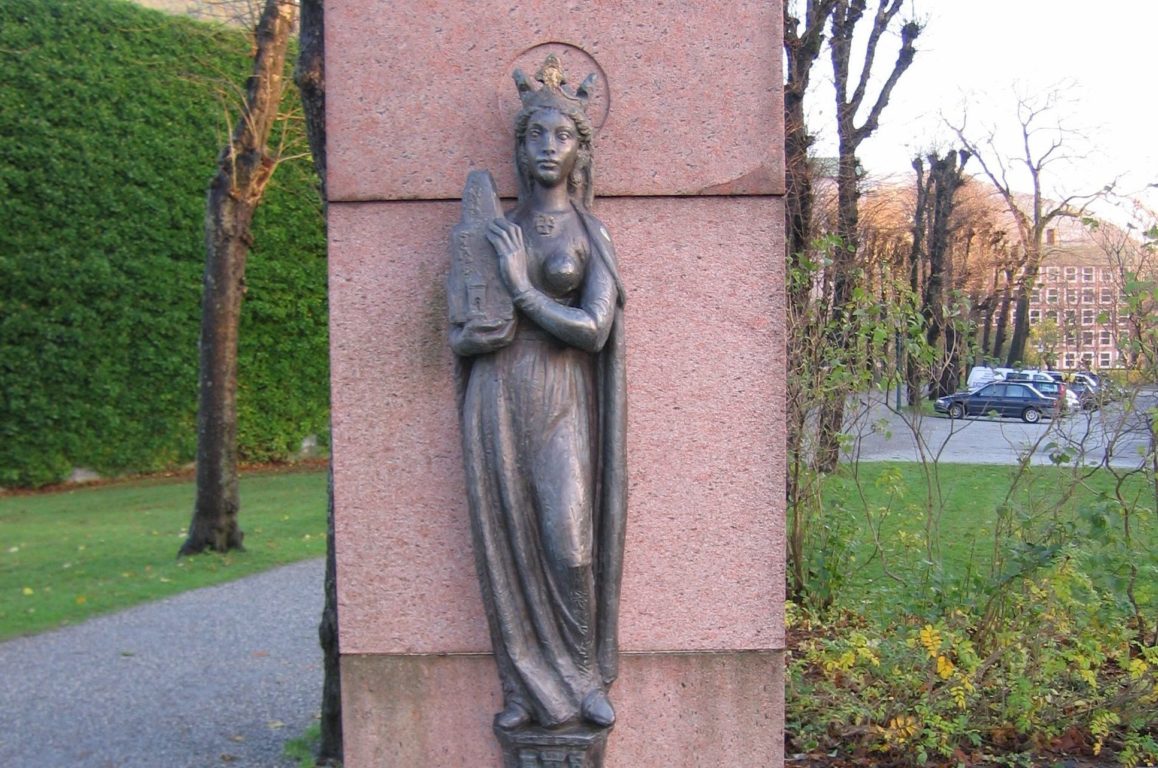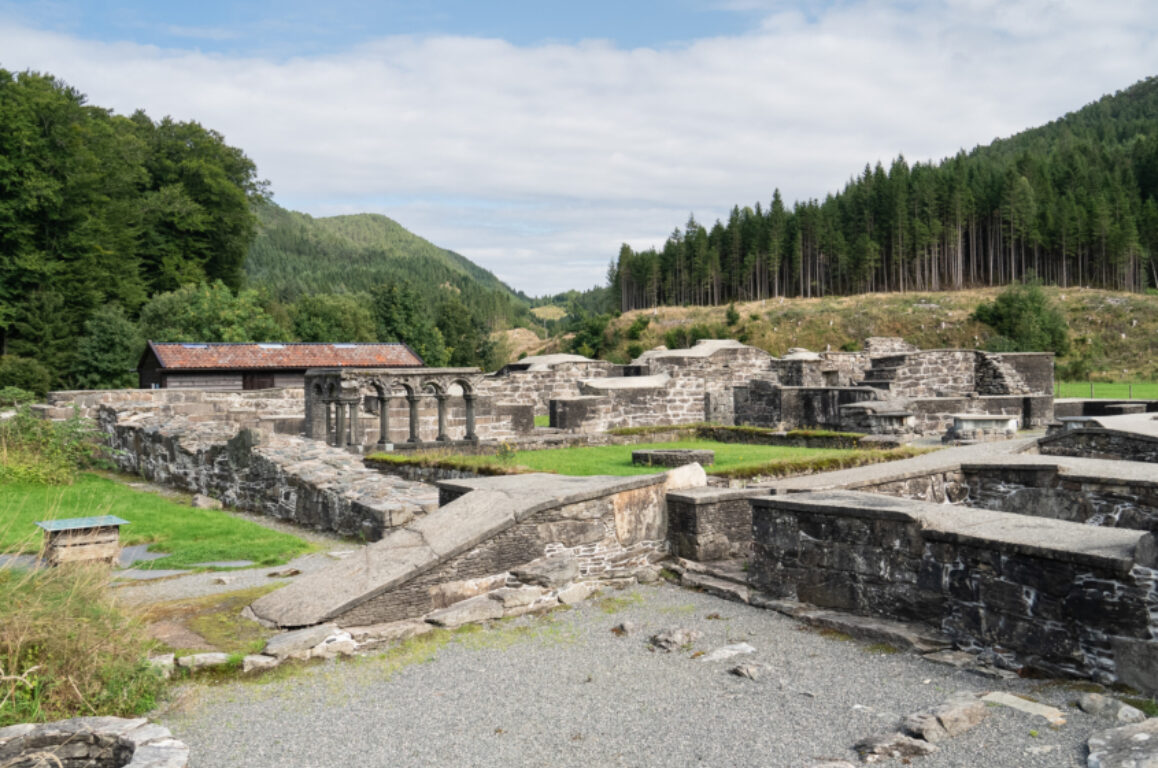Bergen (St. Sunniva, Mariakirken, Lyse kloster)
In the 14th century, the city of Bergen had at least 20 churches, 5 monasteries, 2 hospital for the poor that was run by the church, and a Bishops House with a cathedral chapter. The christian community in Bergen spanned from the local to the international community - from the smallest parish in Nordfjord to the catholic church centers in France, Italy, England and Germany. The large amount of churches in Bergen can be explained by the large influx of people from overseas.
Bergen became an episcopal city in 1170 when the the episcopate was moved from Selja to Bergen.
The relic of St. Sunniva was also moved to Bergen from Selja, and she became the patron saint for the city of Bergen. The relocating of St. Sunniva most likely contributed to the spreading of the Sunniva cult to other countries, for example to North Germany.

Bergen was an important pilgrim city, and was a destination in its own right with its churches, monasteries and ecclesiastical institutions. The city has a central location on the trade route of Norwegian coast, and there was good possibilities for accommodation here. It was also good possibilities for pilgrims to get transport with one of the many trade and cargo ships from Bergen. The Margareta Church at Nordnes was a pilgrimage church, and most likely also the St. Olav Church, which is the city cathedral today. It is also likely that pilgrims have sought out the Casket of St. Sunniva that was kept at the alter of Christ Church at Holmen (Bergenhus Fortress).
Another important relic in Bergen, was a part of Chirst's Crown of Thorns that Magnus Lagabøte is said to have received as a gift from the French King in 1274. This was kept in a small private church at Holmen (Bergenhus Fortress) - The Apostel Church. Written sources indicate that also foreign pilgrims visited Bergen . In 1191, the city was visited by Danish crusaders on their way to the holy land.
Today only three medieval churches remains in Bergen; the Maria Church, the Cathedral and the Cross Church. These are well preserved and are well worth a visit.
Bryggen
One of the most famous cultural heritage sites in the city is Bryggen (the wharf). It was here that the city's first residential area came to be. The old wooden houses that can be seen here today date to the 18th century, but they are built over the burned down remains of the medieval city.

Bryggen is one of the worlds most important cultural heritage sites, and is included in UNESCO's world 53 Heritage List.
Holmen / Bergenhus Fortress
The Royal Fortress at Holmen dates to the Middle Ages and is well worth a visit. Here you can see the site of Christ Church where the casket of St. Sunniva was kept at the alter after having been moved to Bergen in 1170. In the Middle Ages, this was the cathedral of the city. It was also the coronation church and royal burial church.
Håkonshallen (Håkons Hall) and Rosenkrantztårnet (Rosenkrantz Tower) that once belonged to the the Royal Fortress at Holmes, is also worth a visit.

Håkonshalle was built by Håkon Håkonsson in 1261. Today, it is the largest secular building from the Middle Ages in Norway.
Rosenkrantztårnet is known as the most important renaissance building in the country, dating to the 17th century. Parts of the tower is even older. This was the castle that was raised by the fjord, built by King Magnus Lagabøte in the 1270s. Both Rosenkrantztårnet and Håkonshallen are today a part of the City Museum in Bergen, and it is possible to visit and join guided tours through the whole year.
Lyse Abbey
Lyse Abbey was a cistercian monastery that was built around 1150. The monks at Lyse came from Fountains in York, England, and have most likely brought their own builders to build the monastery. Cistercian monasteries were ment to be secluded from the rest of society and they were therefore built in desolate places - this is also the case for Lyse Abbey. The monastery is located in rural surroundings, approx. 20 km south of the center of Bergen.

Today, only the ruins of the foundation wall remains of the monastery. The ruins give a good insight into how the building was laid out.